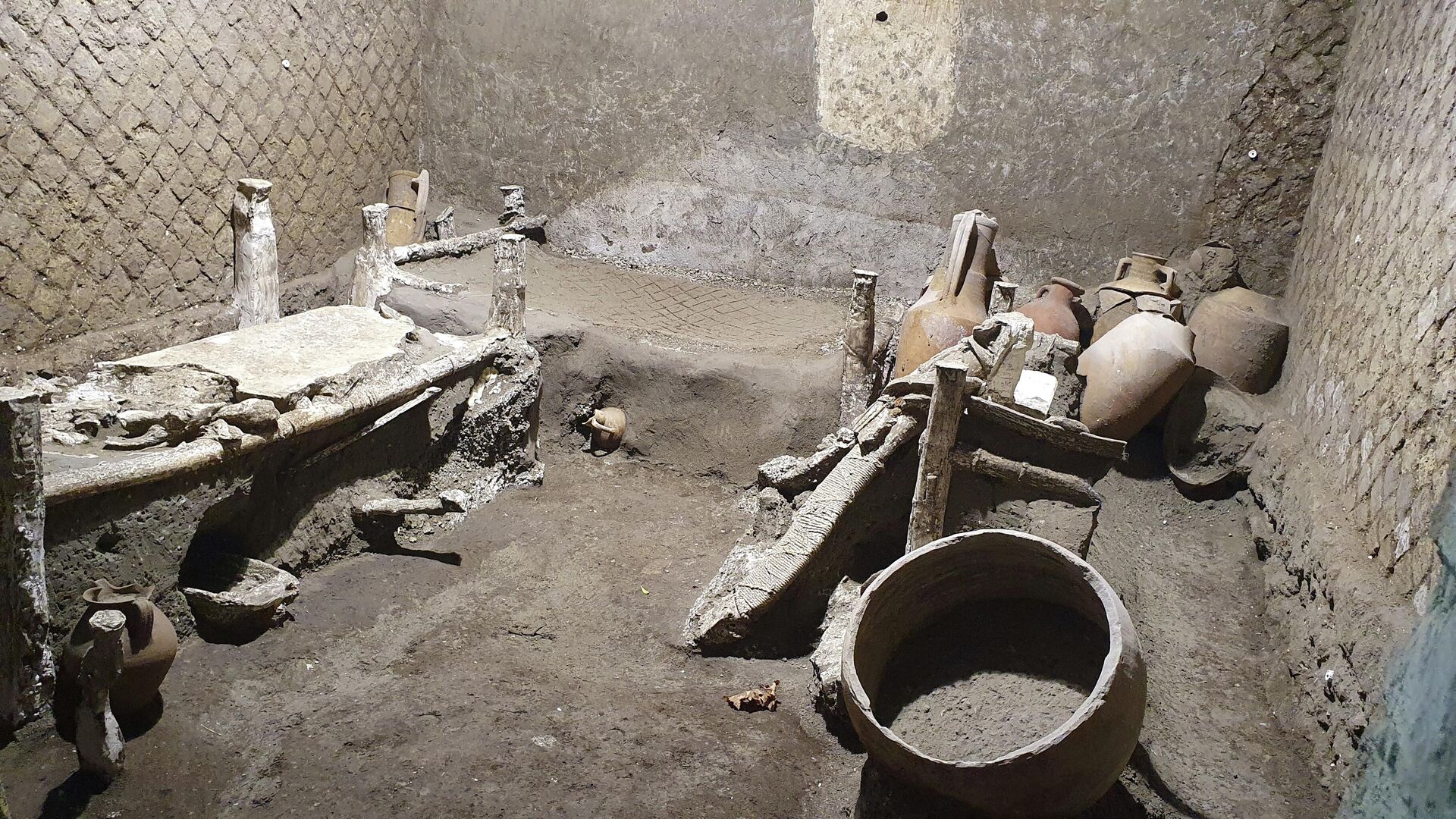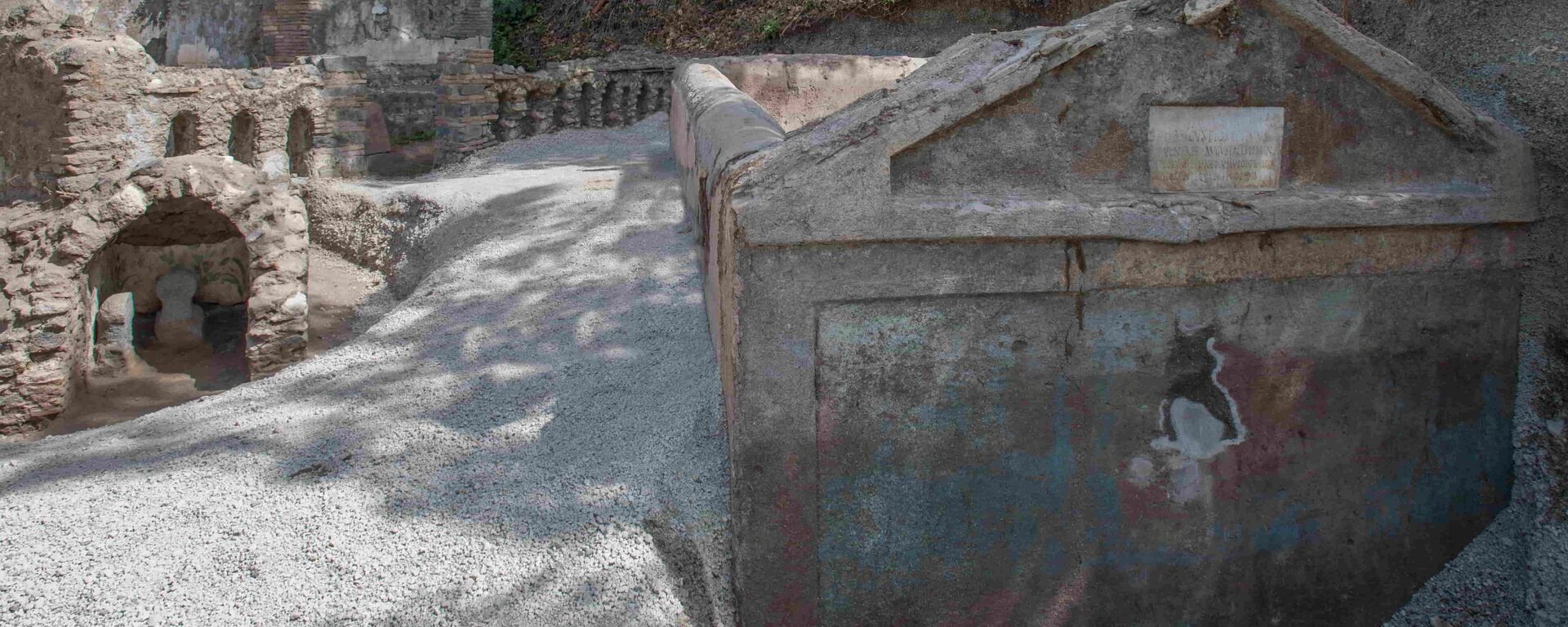Videos: Archeologists Discover IKEA-Like Adjustable Beds in Ancient Roman City of Pompeii
02:29 GMT 08.11.2021 (Updated: 20:18 GMT 19.10.2022)

© REUTERS / MINISTRY OF CULTURAL HERITAGE AN
Subscribe
The researchers also found the skeletal remains of two people, thought to be a wealthy man and his male slave, who were struck by volcanic ash while fleeing imminent death.
Archaeologists have discovered almost 2,000-year-old extendable beds in Pompeii that resemble modern-day adjustable furniture like that sold at IKEA stores.
The beds, which were built of wooden planks that could be altered to fit the size of the person sleeping in them, were discovered in a confined place where slaves used to live.
According to the Archaeological Park of Pompeii's press release, such discoveries are still being uncovered at Civita Giuliana, a suburban villa north of Pompeii that has been researched since 2017, and from which a ceremonial chariot and stable holding the remains of three horses have already been found - in the servant's quarters - for one of which a cast might be created.
"The beds are made of several roughly worked wooden planks which could be adjusted according to the height of whoever used them. While two of them are about 1.7 metres long, one bed measures just 1.4 metres, and may therefore have belonged to a young man or child," the park said in a press release.
According to the scientists, the webbed foundation of the beds was made of rope, whose imprints can be seen in the cinerite, and was covered with fabric blankets, which were likewise preserved as cavities in the ground and replicated using the plaster cast method.

Photos: Archeologists in Ancient Pompeii Find Mummified Remains of Slave Turned Imperial Cult Priest
18 August 2021, 00:47 GMT
Archeologists also unearthed horse harnesses and a chariot shaft within the slaves' chambers, implying that the servants' task was to tend after the affluent Roman family's stables. Baskets would have been used to store the slaves' few belongings.
Archeologists noted that the room was lighted only by a small top window, apart from the traditional oil candles widely used during the Roman era, and, as can be seen in photos or video, no evidence of wall decorations can be found.
“This is a window into the precarious reality of people who seldom appear in historical sources (because they) were written almost exclusively by men belonging to the elite, and who as a result risk remaining invisible in historical accounts," the director of the Pompeii archaeological site, Gabriel Zuchtriegel, said.
According to Zuchtriegel, one of the most interesting aspects of this discovery is that this cramped room "was something between a dormitory and a storage room of just 16 square metres." The scientists believe it was the space where a small slave family or group of slaves lived.
“The study of this room will allow us to uncover new information on the living conditions and lives of slaves at Pompeii and in the Roman world,” said Massimo Osanna, the former director of Pompeii and now the director-general of Italy’s museums.
The villa is one of the most notable recent discoveries at Pompeii, with its panoramic view of the Mediterranean Sea on the fringes of the ancient Roman city. It was discovered in 2017 after authorities discovered illegal tunnels dug by alleged looters.
